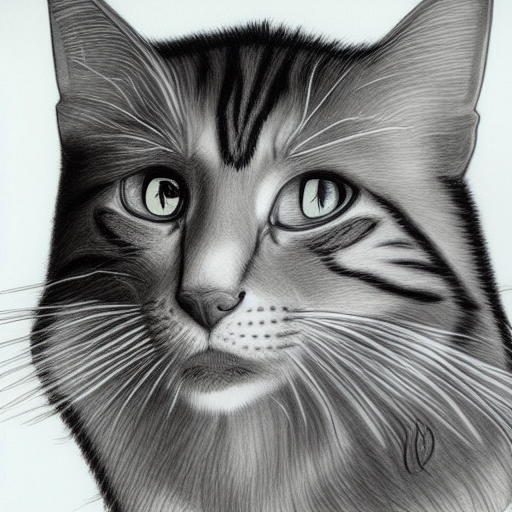Cats can have trouble breathing due to a variety of conditions, including dyspnea, allergies, and a foreign object in the windpipe. Occasionally, these breathing problems can be life-threatening. Knowing what to look for and how to treat these issues is vital for your cat’s health.
Tachypnea
Tachypnea, or rapid breathing, is a common symptom of feline breathing issues. It usually occurs after playtime or physical exertion. If your cat is exhibiting rapid breathing, consult a veterinarian to determine the cause and proper treatment. It may be a sign of respiratory problems, such as asthma, low blood cell count, or fluid in the lungs.
Treatment is often simple, but it depends on the cause of the problem. Generally, if your cat has a respiratory infection, antibiotics can help clear it up. However, if your cat is suffering from a tumor, treatment can be more complicated and may require surgery.
Cats can also develop tachypnea when they are stressed. Although this may be a temporary stress response, it is still important to monitor your cat closely. If your cat is breathing rapidly, be sure to provide plenty of fresh water. If the breathing problem persists, consult your veterinarian to get a more thorough diagnosis.
Tachypnea is a symptom of a respiratory problem that can be life-threatening. The symptoms of tachypnea in felines include rapid breathing, panting, and throat extending. Some cats may also appear to be gagging or vomiting.
Inspiratory dyspnea
The cause of inspiratory dyspnea in a cat can vary. It can result from upper or lower airway disease, pulmonary parenchymal or pleural disease, mediastinal disease, or cardiac disease. It can also occur as a result of neoplastic disease. In addition, some cats may develop asthma, which can be a life-threatening complication.
Although inspiratory dyspnea is not always preventable, there are many measures that owners can take to prevent it. The first step is to make sure that the cat is eating a balanced diet. Another step is to add supplements to the diet. These supplements will help boost your pet’s overall health. Although supplements won’t prevent dyspnea from occurring, they will provide a solid foundation to address any breathing issues that may arise.
Other possible causes of inspiratory dyspnea in a cat include upper airway disease, laryngeal swelling, and nasopharyngeal polyps. In severe cases, the condition can be accompanied by bronchomalacia and lower airway obstruction. Signs include a striderous breathing pattern, nasal discharge, and expiratory distress.
The diagnosis of dyspnea in a cat must be determined by several factors, including the level of stress that your pet is experiencing. Often, the cat will have a low tolerance for stress, and this can make shortness of breath even worse. Despite the signs, you should not let your cat suffer unnecessarily. If your cat is suffering from a respiratory condition, they should be stabilized by a qualified professional to minimize stress.
Cancer
There are several different diagnostic procedures for feline breathing problems. Thoracic radiographs are the most important type of test for a diagnosis of thoracic cancer, and other tests include ultrasound, computed tomography (CT) scan, and magnetic resonance imaging (MRI). These tests can help the veterinarian determine the stage of the disease and whether or not the cat has metastasized.
Surgical removal is the best option if the tumor is small and contained within the lung. The surgery will remove the tumor and ensure that your cat can breathe well. However, if the cancer has spread to other organs, it’s unlikely to be treated surgically. In this case, your cat may die from respiratory failure.
Another condition that can lead to labored breathing in your cat is heart failure. This condition affects older cats the most. However, it can also occur in cats of all ages. Cats suffering from asthma-induced dyspnea are more likely to develop it during warm weather. Obesity is not a predisposing factor, but the problem can worsen faster if your cat is overweight.
Lung cancer is a rare disease in cats, accounting for less than 1% of all cases of feline cancer. However, if a cat has a history of smoking, they are more likely to develop lung cancer. Some cats develop the disease despite not showing any symptoms. In the early stages, it may only cause a dry cough, and a reduced appetite. Other symptoms include a lack of energy.
Pleural effusion
Pleural effusion in cats can be a serious medical condition. The vet will perform a thorough physical examination to determine the severity of the disease and to determine whether it’s due to an underlying condition. This will include a history of your cat’s medical history and a review of your cat’s vital signs. They will also look for signs of infection. X-rays and ultrasounds may be performed.
Pleural effusion is a potentially life-threatening condition characterized by an abnormal accumulation of fluid in the pleural space, the cavity between the thoracic wall and lungs. This space normally contains small amounts of fluid that prevent friction as the lung expands and contracts. However, when there’s an abnormal accumulation of fluid, it interferes with the lungs’ function and can even collapse the lung lobes.
A pleural effusion is a common cause of feline respiratory problems. About 25% of cats with this condition developed it due to neoplasia. The rest of the cases were caused by other conditions. For example, FIP and non-traumatic diaphragmatic hernia are common causes of pleural effusion in cats.
If a pet’s breathing issues are due to a pleural effusion, a combination of home and professional care is often necessary. Follow-up is vital. Regularly monitor your pet’s general activity and appetite. Also monitor whether your pet is able to exercise comfortably. Keep a record of any signs and symptoms that you notice. In addition, remember to give your cat plenty of water.
Trauma
Trauma can cause severe damage to your feline’s lungs, causing it to suffer from breathing difficulties. A common example of this is when a cat is kicked, struck by a car, or falls. Trauma can also cause inflammation of the inner lining of the lungs, which can lead to fluid buildup and apnea. Eventually, this condition can lead to fatal results, so it is important to seek immediate treatment.
Trauma and feline breathing issues can be treated using various techniques, including oxygen therapy and surgery. The goal of the treatment is to restore the oxygen supply to the tissues and to stabilize the animal. Depending on the severity of the breathing problem, treatment can take a number of days, and oxygen therapy is sometimes necessary for long-term management.
The underlying cause of a cat’s breathing problem must be determined before definitive treatment can be administered. Surgical removal of the lesion may be the best option if the condition has been caused by an injury or other medical condition. If the lesion is small and localized, a cat may recover with surgery, while if it is widespread, a poor outlook may be the result.
Cats with breathing problems should be checked by a veterinarian as soon as possible. The veterinarian will likely prescribe supplemental oxygen and perform a chest tap to identify the source of the problem. If the problem is heart-related, the veterinarian may prescribe medications to lower blood pressure and make the heart pump more effectively. These medications can be administered in the form of an inhalation or as a systemic injection.













